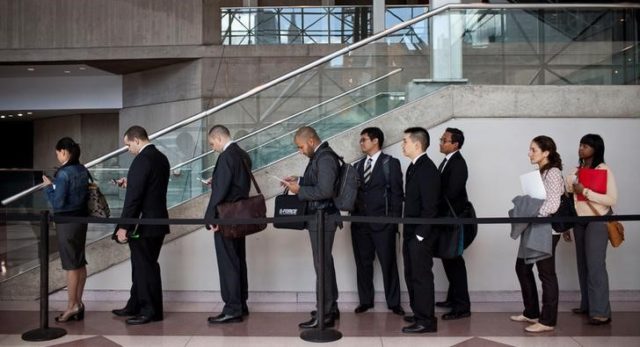The ILO, a UN agency that this year marked its centenary, lamented the fact that it had taken nine years to recover from the shock of the 2007/8 global financial crisis.
Between 2008-9, as the fallout of the near total collapse of major markets took hold, the unemployment rate jumped from 5 to 5.6 per cent, Efe news reported citing the document. Damian Grimshaw, the ILO’s head of investigation, said that while the number of jobs was generally increasing worldwide, the quality of those jobs was not necessarily improving.
Gender continued to present a real issue. “The much lower labour force participation of women, which stood at 48 per cent, compared with 75 per cent for men, means that around three in five of the 3.5 billion people in the global labour force were men,” the report said.
“After a period of rapid improvement that lasted until 2003, subsequent progress on closing the gender gap in participation rates had stalled,” it added. Moreover, 2 billion of the 3.3 billion people in the global labour market worked in informal employment which put their economic security at risk, according to figures in 2016.
“The poor quality of many jobs also manifests itself in the fact that, in 2018, more than one quarter of workers in low and middle-income countries were living in extreme or moderate poverty,” the report said. Global unemployment among young people (between 15-24) stood at 11.8 per cent, higher than other age brackets. The organization expressed alarm at the high level of young people not in employment, education or training.
“In line with a stable aggregate unemployment rate, the outlook for men, women and young people with regard to opportunities on the job market is also very stable,” the report said, adding that “neither the gender disparities nor the labour market challenges faced by young people are expected to abate in the coming year”.
It said youth participation in the labour market had been declining steadily for the last 25 years, although highlighting that one factor for this was that more young people were entering further education.It warned, however, that the increasing number of inactive people in this sense in comparison to the number of active people in the labour market could pose future challenges on how the market is organized.The ILO said it had registered around 114 million children aged between 5-14 involved in the global labour market, 73 million of whom were working in hazardous conditions, according to data from 2016.








